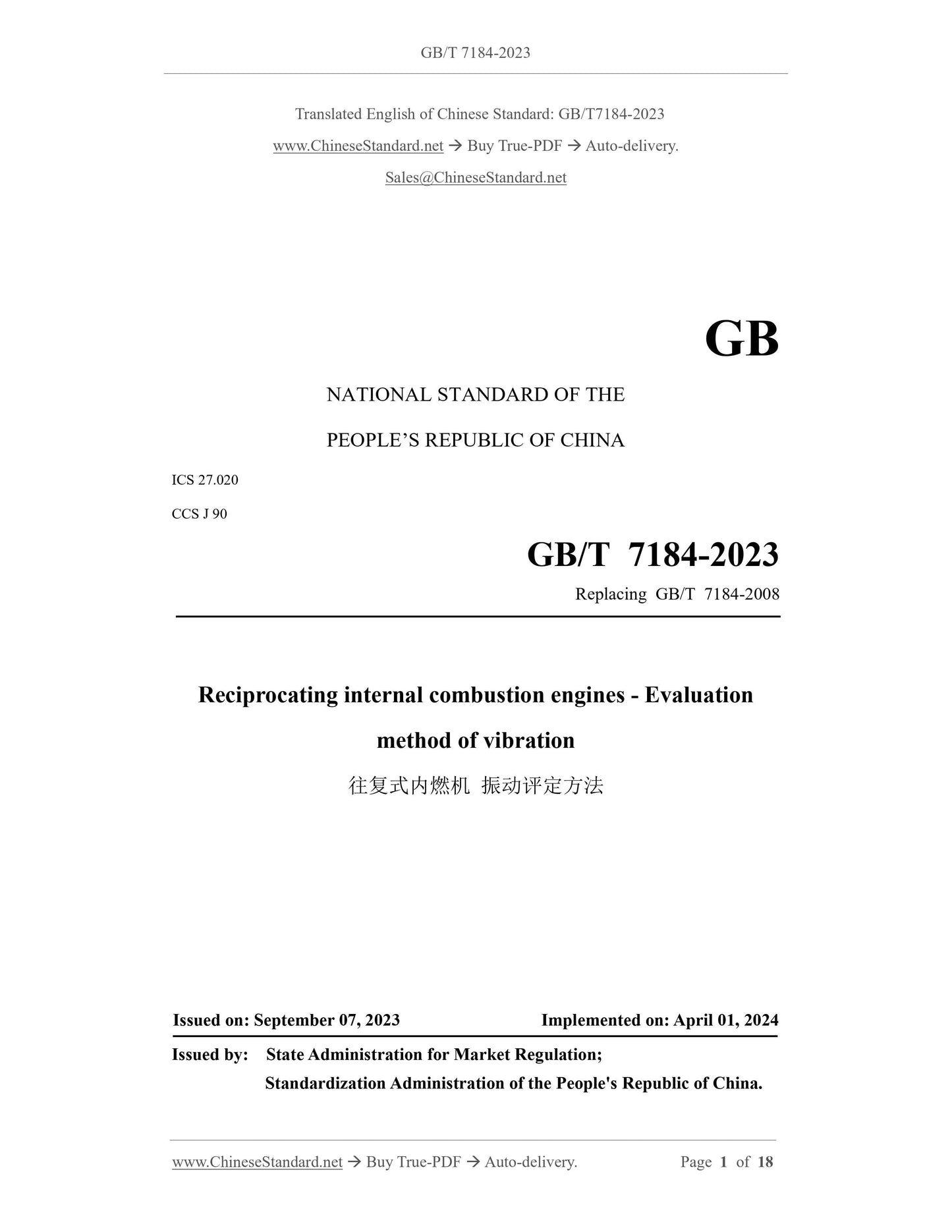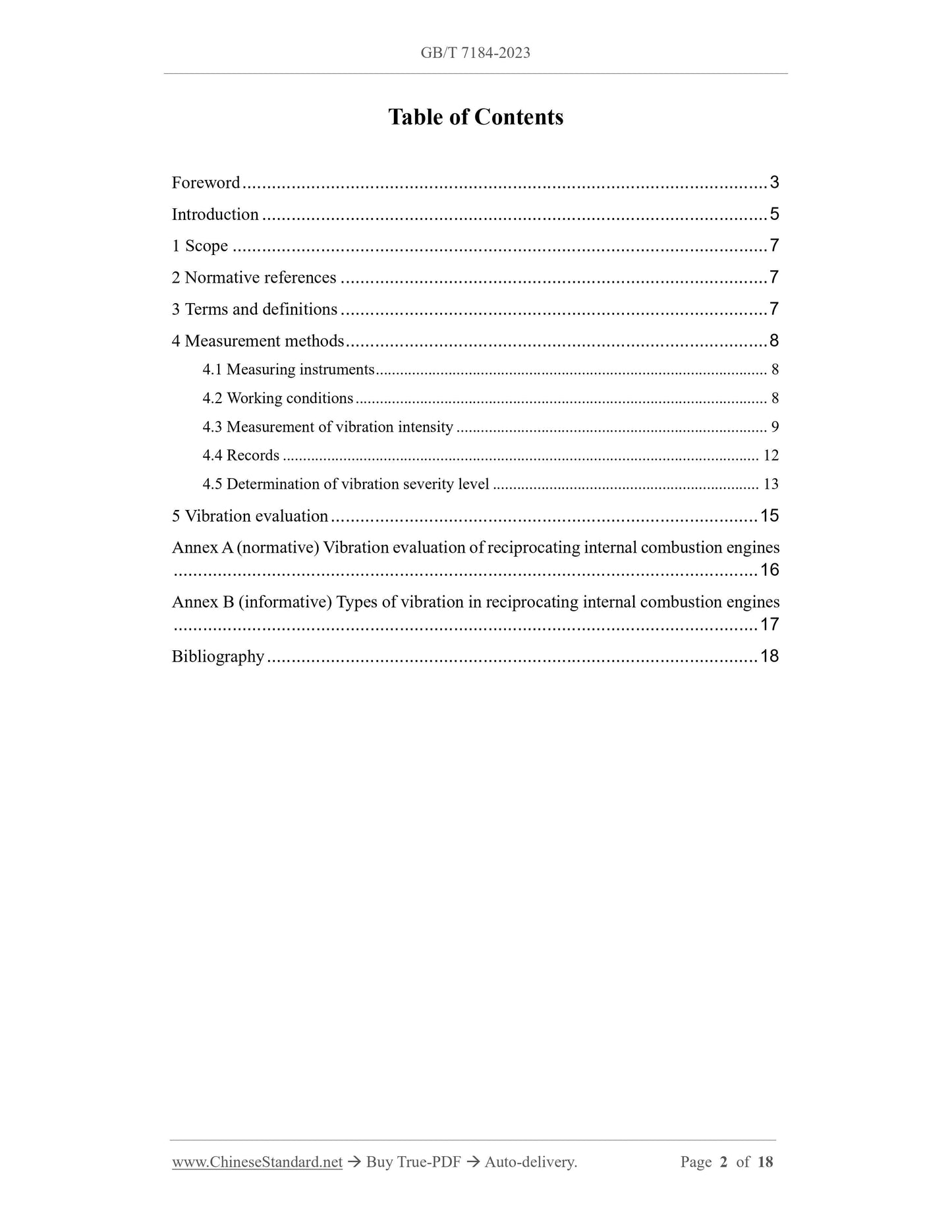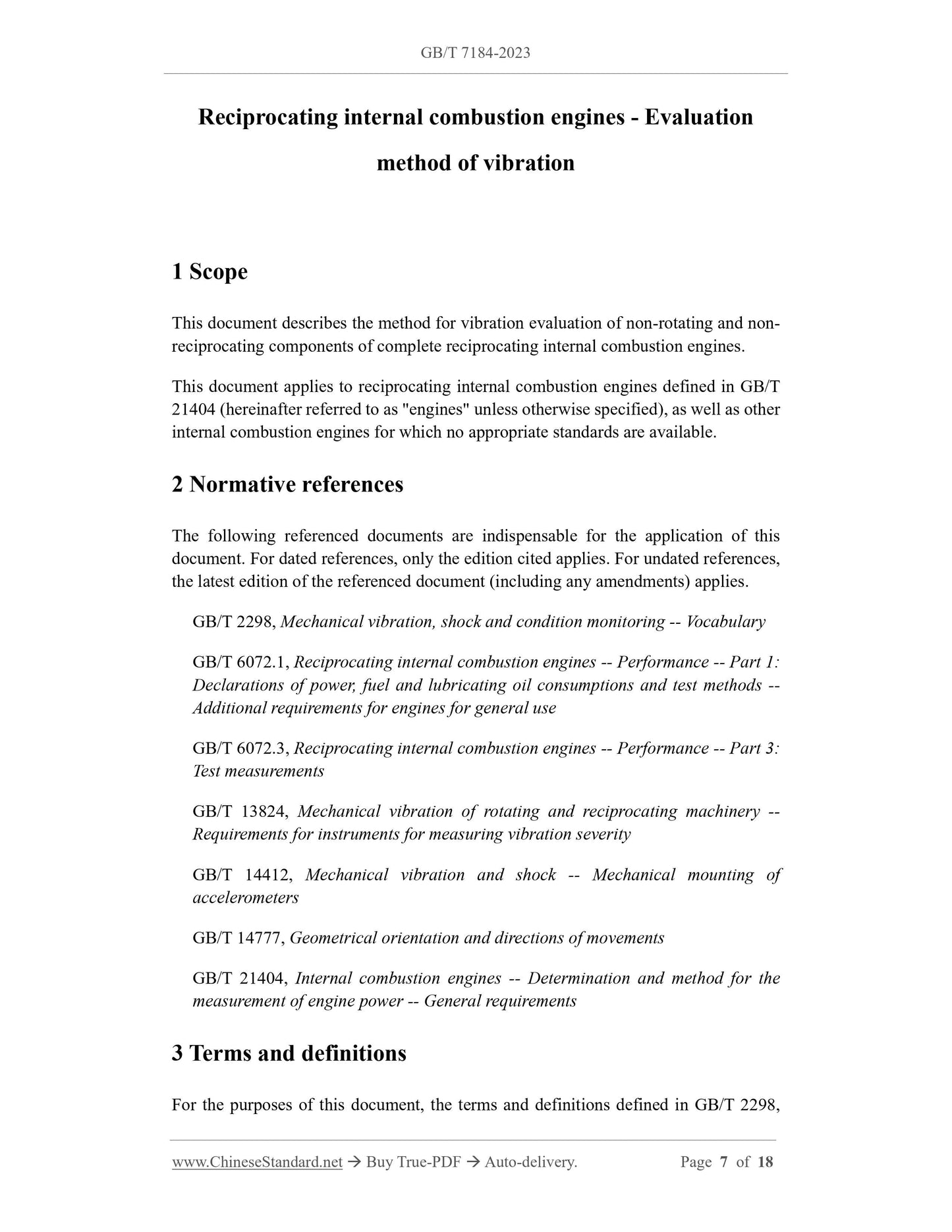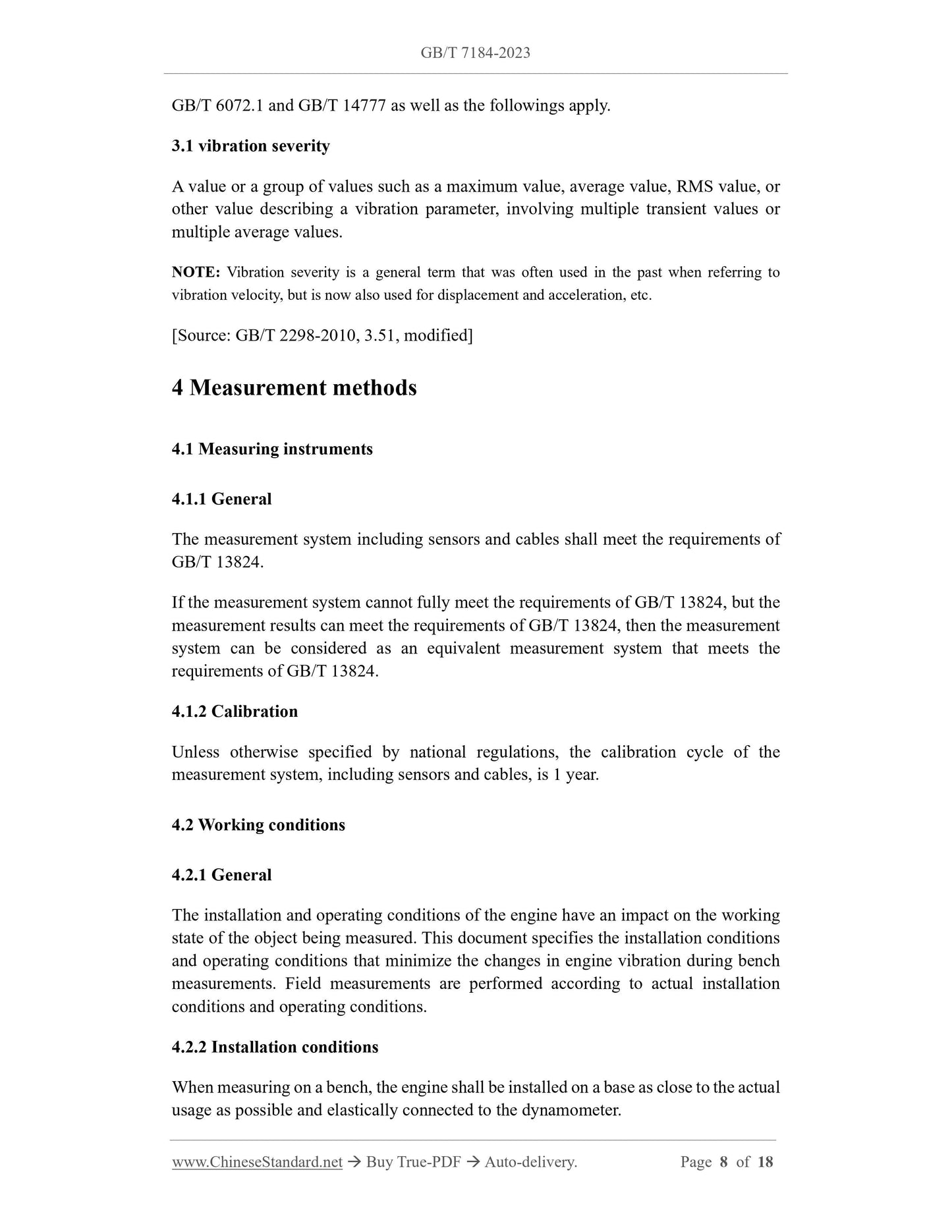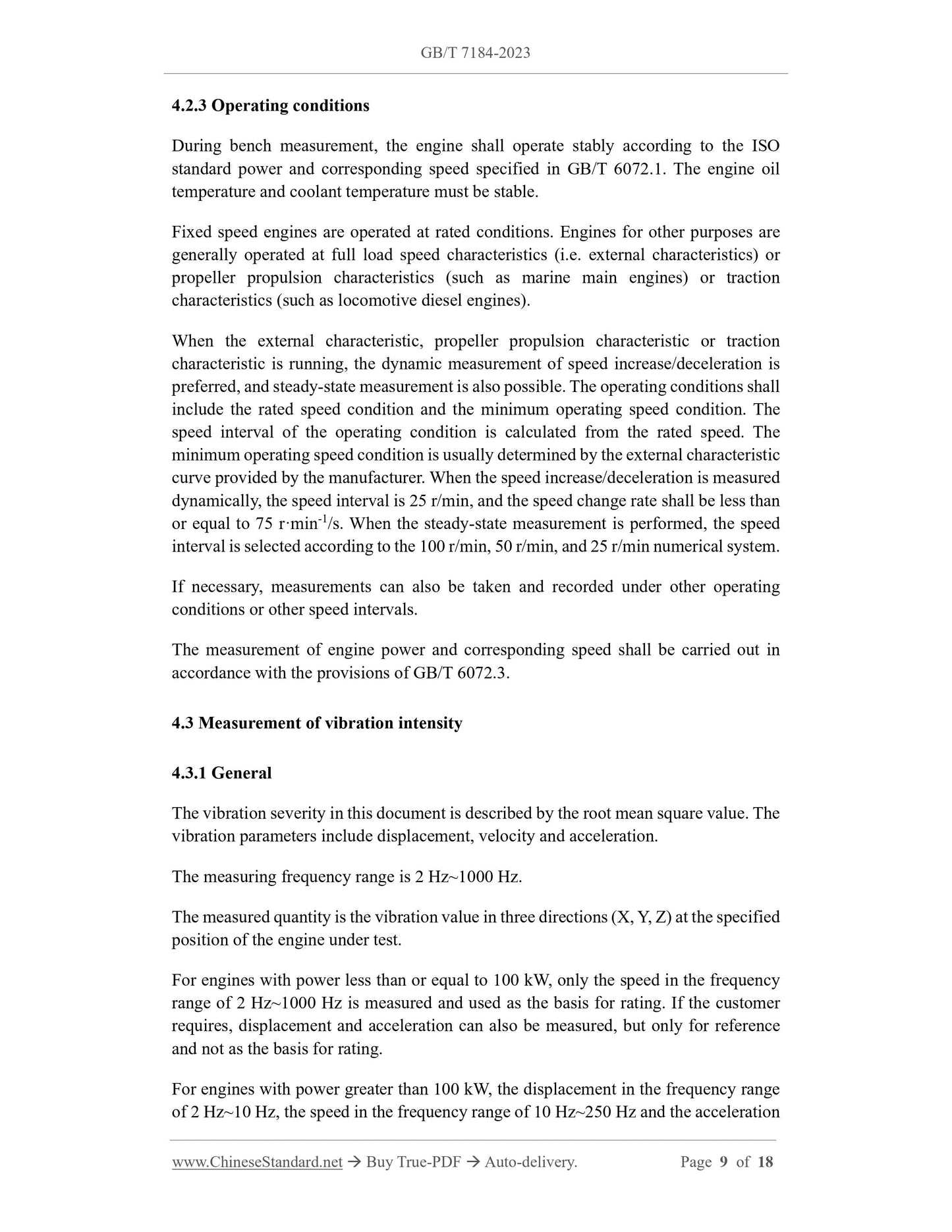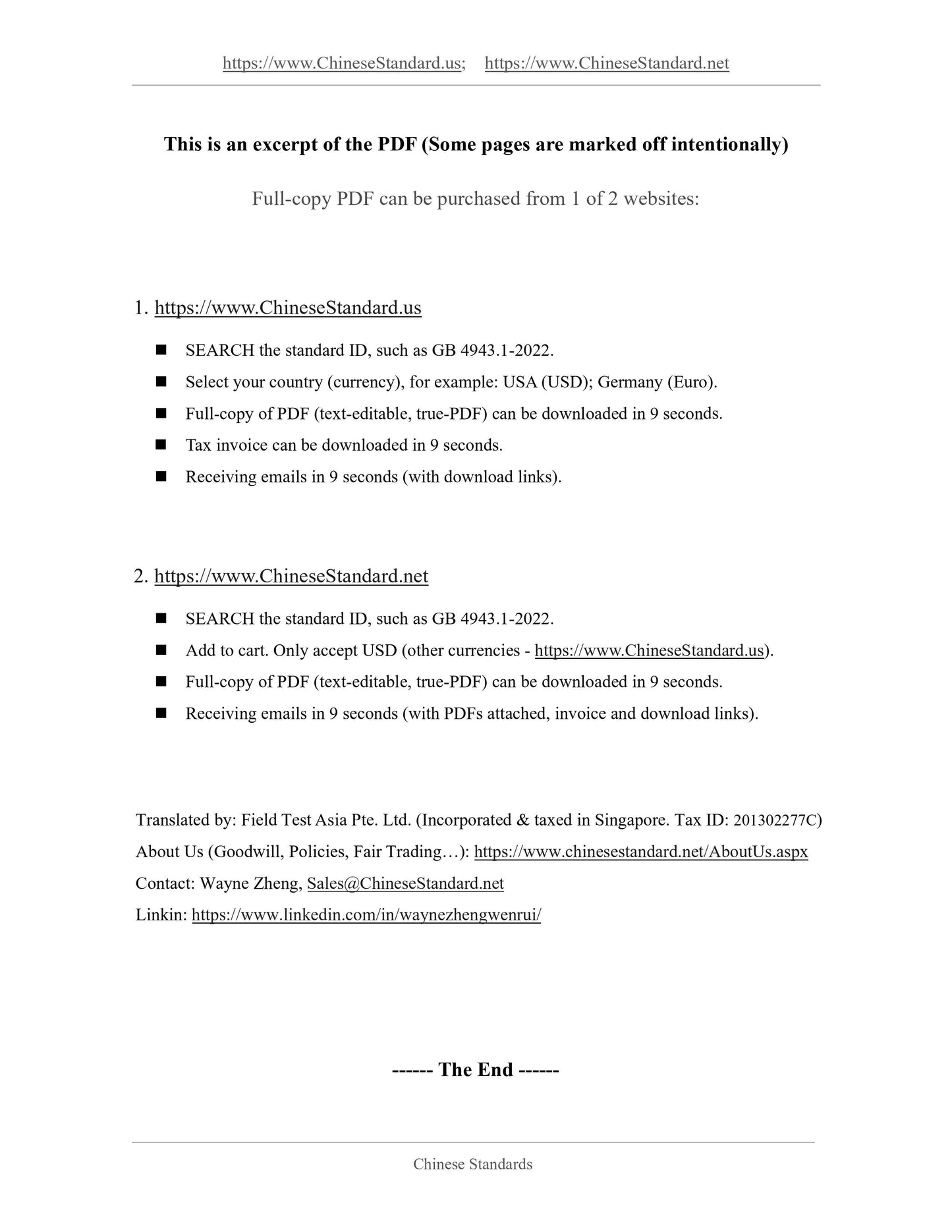1
/
of
6
www.ChineseStandard.us -- Field Test Asia Pte. Ltd.
GB/T 7184-2023 English PDF (GB/T7184-2023)
GB/T 7184-2023 English PDF (GB/T7184-2023)
Regular price
$245.00
Regular price
Sale price
$245.00
Unit price
/
per
Shipping calculated at checkout.
Couldn't load pickup availability
GB/T 7184-2023: Reciprocating internal combustion engines - Evaluation method of vibration
Delivery: 9 seconds. Download (and Email) true-PDF + Invoice.Get Quotation: Click GB/T 7184-2023 (Self-service in 1-minute)
Newer / historical versions: GB/T 7184-2023
Preview True-PDF
Scope
This document describes the method for vibration evaluation of non-rotating and non-reciprocating components of complete reciprocating internal combustion engines.
This document applies to reciprocating internal combustion engines defined in GB/T
21404 (hereinafter referred to as "engines" unless otherwise specified), as well as other
internal combustion engines for which no appropriate standards are available.
Basic Data
| Standard ID | GB/T 7184-2023 (GB/T7184-2023) |
| Description (Translated English) | Reciprocating internal combustion engines - Evaluation method of vibration |
| Sector / Industry | National Standard (Recommended) |
| Classification of Chinese Standard | J90 |
| Classification of International Standard | 27.020 |
| Word Count Estimation | 14,162 |
| Date of Issue | 2023-09-07 |
| Date of Implementation | 2024-04-01 |
| Older Standard (superseded by this standard) | GB/T 7184-2008 |
| Issuing agency(ies) | State Administration for Market Regulation, China National Standardization Administration |
Share
